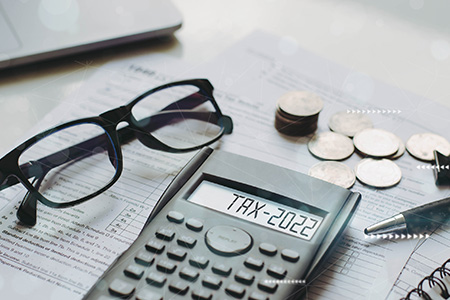How much can I earn in “profit” from selling shares, a property or other investment before I get taxed? Does tax apply when I sell my own home for more than I originally bought it for? These questions pertain to capital gains, which the UK government defines as the sale (or “disposal”) of an asset which has grown in value. Often, a tax is applied when you do this – i.e. capital gains tax (CGT). The rates vary depending on your income, and the asset type, and can significantly erode the after-tax value of your returns if you are not careful.
Fortunately, there are mechanisms available to help you mitigate needless CGT liability. In particular, the CGT allowance can be a great tool. Below, our Carlisle financial planning team explains how this works, how it relates to other tax-efficient allowances (e.g. ISAs) and offers ideas on integrating it effectively into your tax planning.
How capital gains tax works in the UK
When you “dispose” of an asset (e.g. by selling shares) and it has grown in value since your original purchase, the gain itself may be taxed – not the total money you receive from the sale. For instance, suppose you bought shares for £10,000 and later sold them for £15,000. The £5,000 you earned in profit may be subject to capital gains tax (CGT), not the full £15,000.
CGT rates, as mentioned, vary in the UK. Generally speaking, as a Higher or Additional Rate taxpayer you might pay 28% on gains generated from disposing of residential property assets (e.g. a Buy to Let). Other chargeable assets might be charged at 20%. Those on the Basic Rate, however, may pay 18% on gains from disposing of assets for a capital gain (or 18% on non-residential property).
You do not typically pay tax on gains from selling your main home. If you bought your family home for £300,000, for instance, and sold it 10 years later for £400,000, then you do not pay CGT on the £100,000 gain.
What is the CGT allowance and how does it work?
You do not pay CGT on every gain you make. Each tax year, a UK resident (regardless of their income) is entitled to make £12,300 in gains without tax. This is not “used up” in any way if you sell your main home – only if you sell “chargeable assets” for a capital gain, such as company shares or a Buy to Let. Please note that this allowance is only available to individuals; it is not available to companies or organisations which sell assets for a profit.
Working out your taxable gains is not always easy, however. Perhaps you jointly own the asset in question. In which case, you will need to demonstrate your share of the asset when working out the gain. You may not need to report your gains if these are below your annual tax-free allowance. However, you are required to if you are registered for Self Assessment.
Ideas to use the CGT allowance effectively
Your £12,300 tax-free allowance “refreshes” each tax year (6th April) and cannot be “carried over” to the next tax year. Any unused allowance will, therefore, be lost at this point. As such, make sure you take full advantage by planning ahead early on in the tax year. Leaving things until the last minute may lead to making tax-inefficient decisions about asset disposals which could erode your returns.
Sometimes, you can generate more tax-free capital gains by “spreading out” disposals across multiple tax years (rather than concentrating all of them in one year). Spouses and civil partners can also transfer assets between each other without tax implications, which allows you to join your allowances together to generate up to £24,600 in capital gains, tax-free. For instance, by putting a Buy to Let into joint ownership with your spouse before the sale (or transferring a share of ownership), this could allow you to generate more tax-free gains from the property.
Another thing to bear in mind is your ISA. You can put up to £20,000 into your ISA(s) each tax year, and any gains generated inside can be sold without CGT. This is also available to your spouse or civil partner. Here, you could reduce your tax liability over the years ahead by building certain assets within your ISA (e.g. shares) and others outside (e.g. a Buy to Let). If you ever need to dispose of multiple assets within the same tax year in the future, this can help to save on your overall CGT bill.
For some investors, certain investment types can offer a tax-efficient way to generate capital gains. Venture Capital Trusts (VCTs), for instance, are shares that offer special tax reliefs – e.g. not needing to pay CGT when you dispose of them. However, these investments are generally higher in risk level than traditional investments and so may not be suitable for certain individuals.
Invitation
If you would like to discuss your financial plan and retirement strategy, then we would love to hear from you. Get in touch with your Financial Planner here at Vesta Wealth in Cumbria, Teesside and across the North of England.
Reach us via:
t: 01228 210 137
e: [email protected]
This content is for information purposes only. It should not be taken as financial or investment advice. To receive personalised, regulated financial advice regarding your affairs please consult your Financial Planner here at Vesta Wealth in Cumbria, Teesside and across the North of England.

